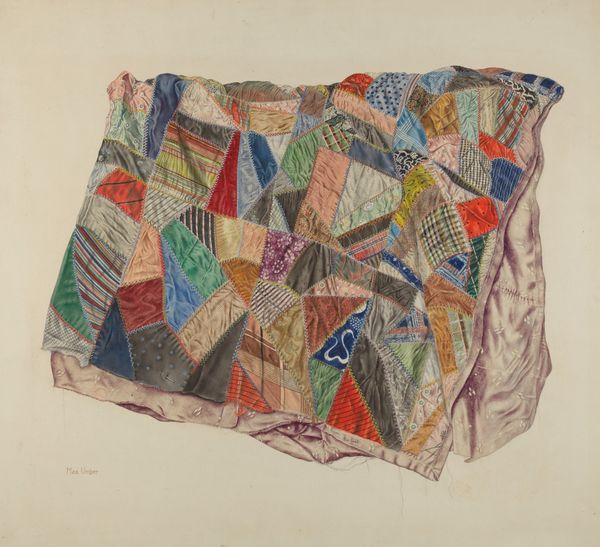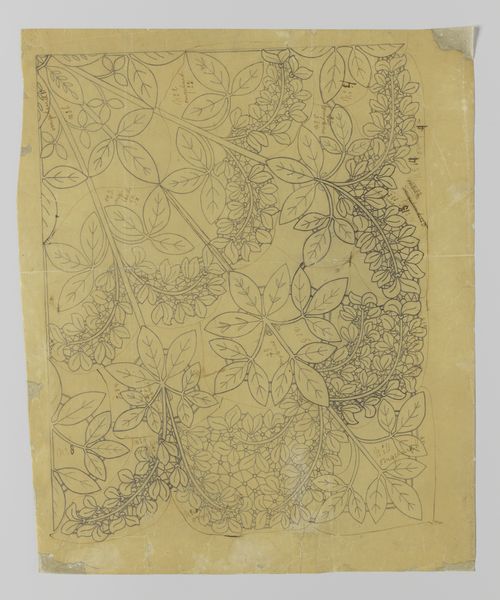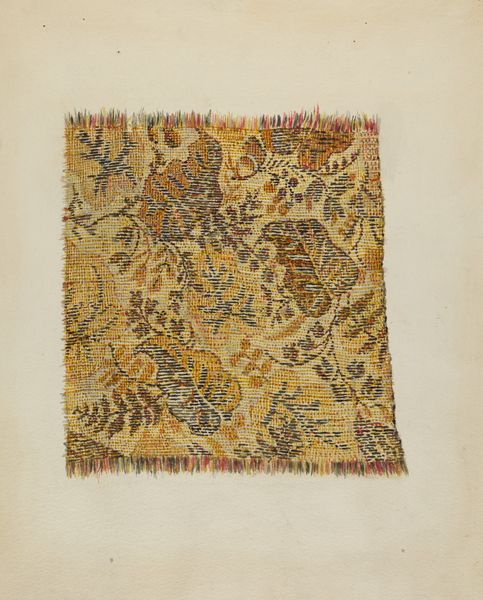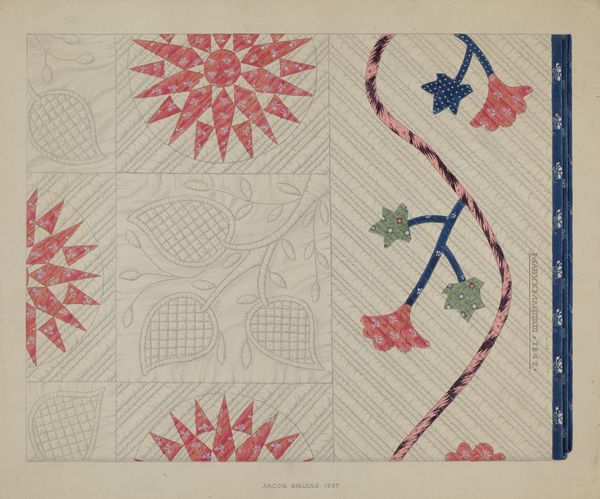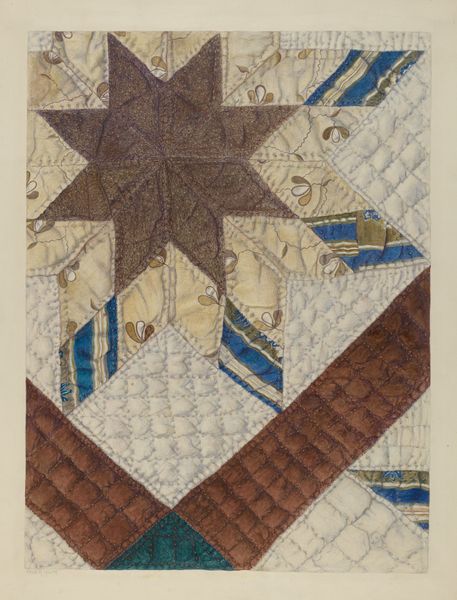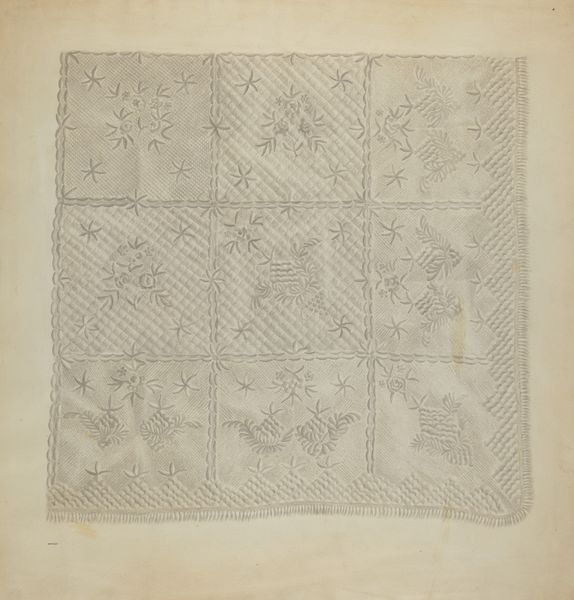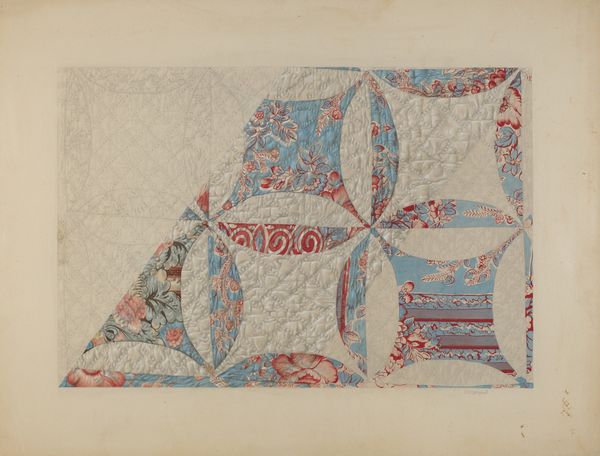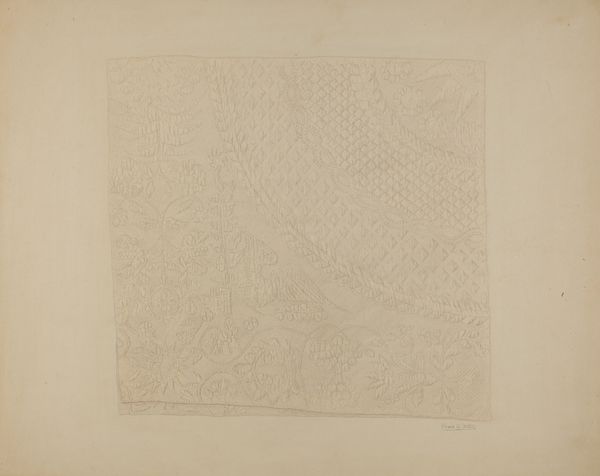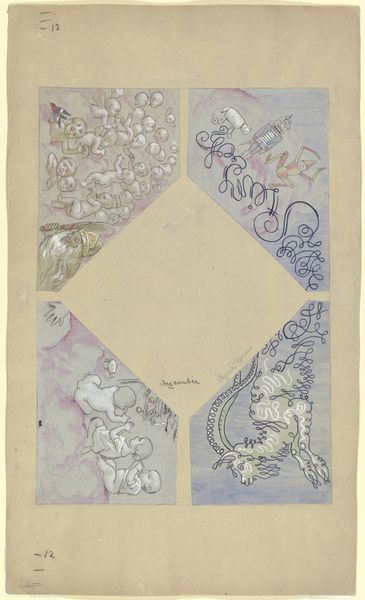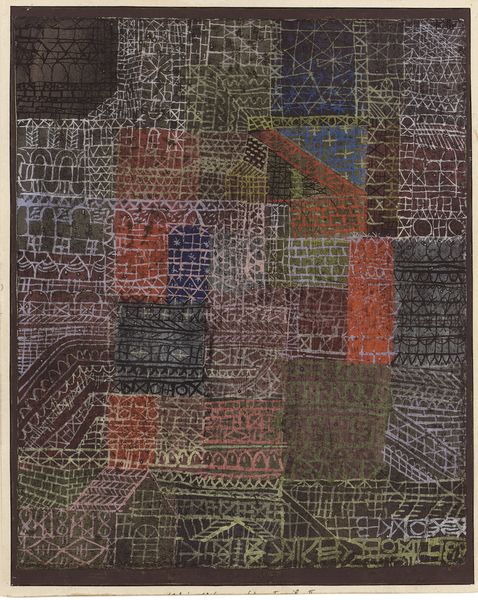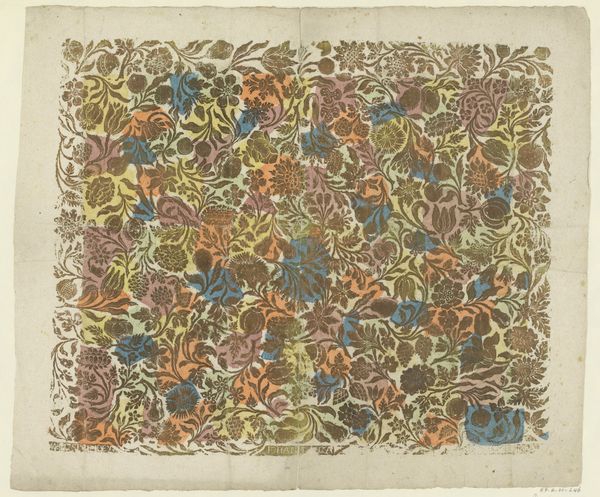
drawing, textile, watercolor
#
drawing
#
textile
#
watercolor
#
folk-art
#
watercolor
Dimensions: overall: 49.6 x 35.5 cm (19 1/2 x 14 in.)
Copyright: National Gallery of Art: CC0 1.0
Editor: Here we have Maud M. Holme’s "Pieced Quilt - 'Star Pattern'," created around 1938 using watercolor, drawing, and textile. The delicate colors and patterns give it such a peaceful feel. What strikes you when you look at it? Curator: It’s a tender depiction, isn’t it? The 'Star Pattern' quilt evokes the tradition of women's work and domestic craft. Think about the social context: quilts provided warmth, but also acted as powerful visual narratives within communities. The careful stitching and repeated motifs weren't just decorative, they were a means of asserting identity, preserving heritage, and even quiet resistance in a society that often devalued women's contributions. Editor: Resistance? In what way? Curator: Quilts, particularly during times of economic hardship or social upheaval, symbolized resilience and resourcefulness. These weren't just acts of necessity; they were conscious decisions to create beauty and meaning within restrictive conditions, thereby subtly challenging societal norms and expectations. Do you see the subtle irregularities? They speak volumes about the artist’s individual agency. Editor: I hadn't considered it in that way. It's interesting to think of folk art as a form of silent protest. Curator: Precisely. And even today, textile art can function as a potent platform for contemporary social commentary and feminist expression, bridging the personal and the political. So, what did you find particularly insightful? Editor: I’ll never see quilts in the same way again. Thank you!
Comments
No comments
Be the first to comment and join the conversation on the ultimate creative platform.
